|
The
Drugs Most Commonly Used:
Acetazolamide
(Diamox): This is the most tried and tested drug
for altitude sickness prevention and treatment. Unlike dexamethasone
(below) this drug does not mask the symptoms but actually
treats the problem. It works by increasing the amount of alkali
(bicarbonate) excreted in the urine, making the blood more
acidic. Acidifying the blood drives the ventilation process,
which is the cornerstone of acclimatization.
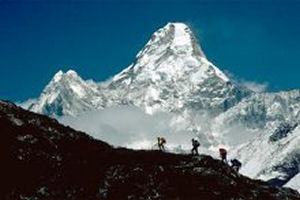 For
prevention, one 250mg tablet should be taken daily starting
one or two days before and continuing for three days once
the highest altitude is reached. Blood concentrations of acetazolamide
peak between one to four hours after administration of the
tablets. It may therefore, be better to take 125mg (half a
tablet) twice daily. Gradual ascent is always desirable to
try to avoid acute mountain sickness even when acetazolamide
is being taken. For
prevention, one 250mg tablet should be taken daily starting
one or two days before and continuing for three days once
the highest altitude is reached. Blood concentrations of acetazolamide
peak between one to four hours after administration of the
tablets. It may therefore, be better to take 125mg (half a
tablet) twice daily. Gradual ascent is always desirable to
try to avoid acute mountain sickness even when acetazolamide
is being taken.
Studies have shown that prophylactic administration of acetazolamide
at a dose of 250mg every eight to twelve hours before and
during rapid ascent to altitude results in fewer and/or less
severe symptoms (such as headache, nausea, shortness of breath,
dizziness, drowsiness, and fatigue) of acute mountain sickness
(AMS). Pulmonary function is greater both in subjects with
mild AMS and asymptomatic subjects. The treated climbers also
had less difficulty in sleeping.
 However,
gradual ascent is always desirable to try to avoid acute mountain
sickness but if rapid ascent is undertaken and actazolamide
is used, it should be noted that such use does not obviate
the need for a prompt descent if severe forms of high altitude
sickness occur, i.e. pulmonary or cerebral oedema. However,
gradual ascent is always desirable to try to avoid acute mountain
sickness but if rapid ascent is undertaken and actazolamide
is used, it should be noted that such use does not obviate
the need for a prompt descent if severe forms of high altitude
sickness occur, i.e. pulmonary or cerebral oedema.
Side effects of acetazolamide include: an uncomfortable tingling
of the fingers, toes and face carbonated drinks tasting flat;
excessive urination; and very rarely, blurring of vision.
On most treks, gradual ascent is possible and prophylaxis
tends to be discouraged. Certainly if trekkers do develop
headache and nausea or the other symptoms of AMS, then treatment
with acetazolamide is fine. The treatment dosage is 250 mg
twice a day for about three days.
Acetazolamide may be obtained on prescription in the UK from
Doctor
Fox
Should
you take Diamox (acetazolamide)?
Watch the video:

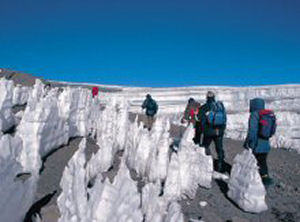 Dexamethasone:
This powerful steroid type drug can be life saving in people
with HAPO & HACO, and works by decreasing brain swelling
and reducing the pressure in the skull. The dosage is 4 mg
three times per day, and obvious improvement usually occurs
within about six hours. It's use is highly specialised and
can be very dangerous if used incorrectly or by inexperienced
persons. Dexamethasone:
This powerful steroid type drug can be life saving in people
with HAPO & HACO, and works by decreasing brain swelling
and reducing the pressure in the skull. The dosage is 4 mg
three times per day, and obvious improvement usually occurs
within about six hours. It's use is highly specialised and
can be very dangerous if used incorrectly or by inexperienced
persons.
It can be a good "emergency drug" since it "buys
time" especially at night when it may be problematic to descend.
Descent should be carried out as soon as possible the next
day. It is unwise to ascend while taking dexamethasone: unlike
diamox this drug only masks the symptoms.
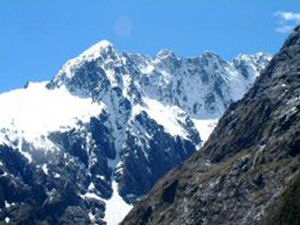 Dexamethasone
can be highly effective: many people who are lethargic or
even in coma will improve significantly after tablets or an
injection, and may even be able to descend with assistance. Dexamethasone
can be highly effective: many people who are lethargic or
even in coma will improve significantly after tablets or an
injection, and may even be able to descend with assistance.
Many pilgrims at the annual festival at Gosainkunda lake in
Nepal suffer from HACO following a rapid rate of ascent, and
respond remarkably well to dexamethasone. Mountain climbers
also sometimes carry this drug to prevent or treat AMS. However,
it needs to be used cautiously. It has been known to cause
stomach irritation, euphoria or depression.
It may be a good idea to pack this drug for a high altitude
trek for emergency usage in the event of HACO. In people allergic
to and therefore unable to take acteazolamide, dexamethasone
can also be used for prevention: 4 mg twice a day for about
three days should be sufficient but only under experienced
supervision.
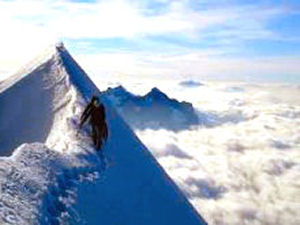 Ibuprofen:
A new study shows that Ibuprofen helps to alleviate altitude
sickness: Ibuprofen:
A new study shows that Ibuprofen helps to alleviate altitude
sickness:
A study published in 2012 in the Annals of Emergency Medicine
by Dr. Grant Lipan, a professor of emergency medicine at Stanford
University School of Medicine and a climber, recommends that
taking a few ibuprofen tablets can prevent and alleviate the
symptoms of AMS. Lipman says, "Ibuprofen can prevent
26% of cases of altitude sickness and help people who are
without symptoms to stay without symptoms."
Ibuprofen has Less Risks than other Drugs:
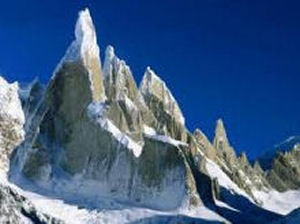 Prior
to the study, recommended medications for acute mountain sickness
(AMS) included dexamethasone and acetazolamide or Diamox,
a prescription-only drug. Now add ibuprofen to the list of
altitude cures. Ibuprofen has lots of plusses; it is fast-acting,
cheap, readily available, and quickly absorbed by the body. Prior
to the study, recommended medications for acute mountain sickness
(AMS) included dexamethasone and acetazolamide or Diamox,
a prescription-only drug. Now add ibuprofen to the list of
altitude cures. Ibuprofen has lots of plusses; it is fast-acting,
cheap, readily available, and quickly absorbed by the body.
Both dexamethasone and acetazolamide have adverse effects
and require a doctor's prescription, whereas ibuprofen has
few side effects except for an increased risk of gastrointestinal
and kidney problems in users who are dehydrated and it is
availavle over the counter from your pharmacy.
Ibuprofen Decreases Brain Swelling:
 As
we ascend to higher altitudes, our bodies adjust to decreased
oxygen in the air and reduction in air pressure, which leads
to a swelling of the brain in some climbers. This allows fluid
to build up in the brain, putting pressure on cranial nerves
and causing headaches, dizziness, and the other symptoms of
altitude sickness. As
we ascend to higher altitudes, our bodies adjust to decreased
oxygen in the air and reduction in air pressure, which leads
to a swelling of the brain in some climbers. This allows fluid
to build up in the brain, putting pressure on cranial nerves
and causing headaches, dizziness, and the other symptoms of
altitude sickness.
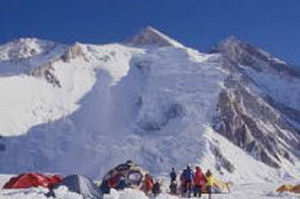 Ibuprofen,
an anti-flammatory drug, decreases the swelling, lowering
the risk of headaches and helping the body to adjust to an
oxygen-deprived environment. Ibuprofen,
an anti-flammatory drug, decreases the swelling, lowering
the risk of headaches and helping the body to adjust to an
oxygen-deprived environment.
Take Ibuprofen before climbing high:
Dr. Lipman recommends taking 600 mg (as three 200 mg ibuprofen
tablets), several hours before climbing to a higher elevation.
He notes that climbers should then take 24 hours off the drug
to allow the body to adjust and acclimatize to the new higher
altitude.
Ibuprofen allows climbers and other altitude junkies to get
past the initial period that causes AMS and helps the body
to adjust to decrease the symptoms.
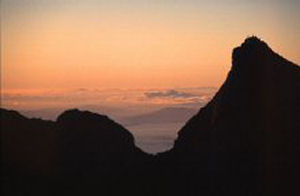 Nifedipine:
This drug is normally used to treat high blood pressure and
angina, but also seems able to decrease the narrowing in the
pulmonary artery (pulmonary vasodilation) resolving the pulmonary
hypertension responsible for the high pressure leak in the
lungs caused by low oxygen levels, thereby improving oxygen
transfer. It can therefore be used in the treatment of HAPO,
though unfortunately its effectiveness is not anywhere as
dramatic that of dexamethasone in HACE. Oxygen saturations
gusually improve slightly after administration of nifedipine.
The dosage is 20 mg of long acting nifedipine, six hourly. Nifedipine:
This drug is normally used to treat high blood pressure and
angina, but also seems able to decrease the narrowing in the
pulmonary artery (pulmonary vasodilation) resolving the pulmonary
hypertension responsible for the high pressure leak in the
lungs caused by low oxygen levels, thereby improving oxygen
transfer. It can therefore be used in the treatment of HAPO,
though unfortunately its effectiveness is not anywhere as
dramatic that of dexamethasone in HACE. Oxygen saturations
gusually improve slightly after administration of nifedipine.
The dosage is 20 mg of long acting nifedipine, six hourly.
Nifedipine can cause postural hypotension; a sudden lowering
of blood pressure so the patient has to be warned to get up
slowly from a sitting or reclining position. It has also been
used in the same dosage to prevent HAPO in people with a past
history of this disease.
Frusemide: may
clear the lungs of water in HAPO and reverse the suppression
of urine brought on by altitude. However, Frusemide can also
lead to collapse from low volume shock if the victim is already
dehydrated.
Usage of frusemide without medical supervision is not routinely
recommended. The treatment dosage is 120mg daily.
For
more information on altitude & altitude sickness
go to the Mountain Sickness page.
DoctorFox:
Obtain Diamox (Acetazolamide) for altitude sickness, forced
acclimatisation
and altitude sleep disturbance - Medicine on an NHS prescription
from a pharmacy. |
 |
|